
Xi inspects troops as China's military might on show
Zhao Lei in Zhurihe, Inner Mongolia
President Xi Jinping urges the People's Liberation Army to spare no efforts to become a world-class military after inspecting troops in Inner Mongolia.
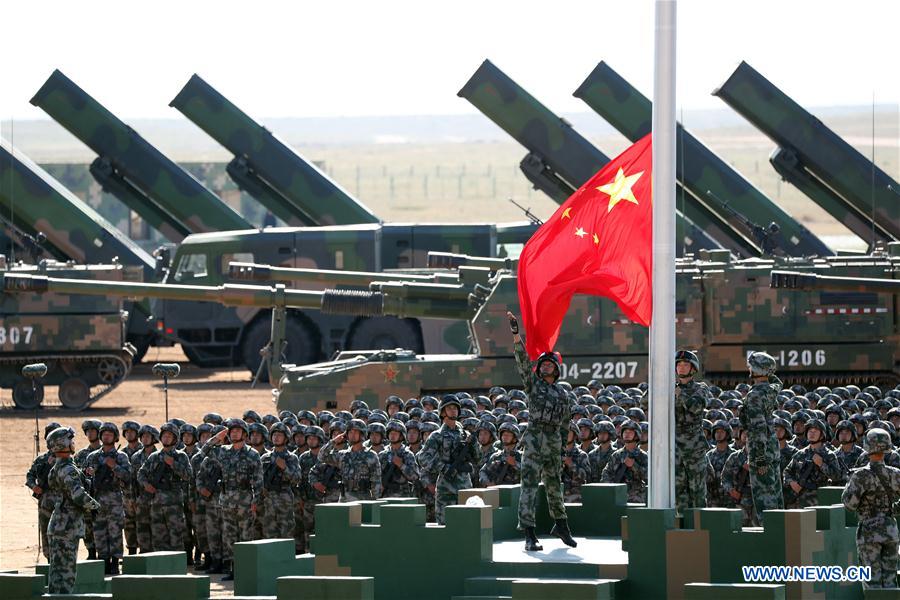
President Xi Jinping urged the People's Liberation Army to spare no efforts to become a world-class military after inspecting troops in the Chinese military's first field parade in several decades.
Xi, who is also general secretary of the Communist Party of China Central Committee and chairman of the Central Military Commission, said the country was close to realizing the great rejuvenation of the Chinese nation and, therefore, a mighty military was much needed to safeguard the process.
He told PLA's top commanders and officers and soldiers who just staged a parade in front of him on Sunday morning to stick to the Party's leadership, to continue serving the people, to further improve their combat capability and to deepen the reform and boost innovation.
"I am convinced that our heroic armed forces are confident and capable of defeating enemies daring to provoke us, of safeguarding our sovereignty, security and development interests … and of making new contributions to the China Dream and world peace," he said.
The PLA carried out a field parade on Sunday morning at the Zhurihe Training Base in the Inner Mongolia autonomous region to mark its 90th anniversary that falls on Tuesday.
Hundreds of large weapons and equipment, many of them never shown to the public before, and 12,000 troops took part in the grand parade.
It's the first time the PLA have held a parade at an exercise field in nearly four decades.
In 1981, a parade was performed at a training base in North China and witnessed by the late Party leader Deng Xiaoping. Three parades have been staged at Tian'anmen Square in Beijing since then in 1999, 2009 and 2015.
Sunday's event was also the first parade specifically organized to celebrate a founding anniversary of the PLA.
It represents the PLA's determination to become a top military in the world.
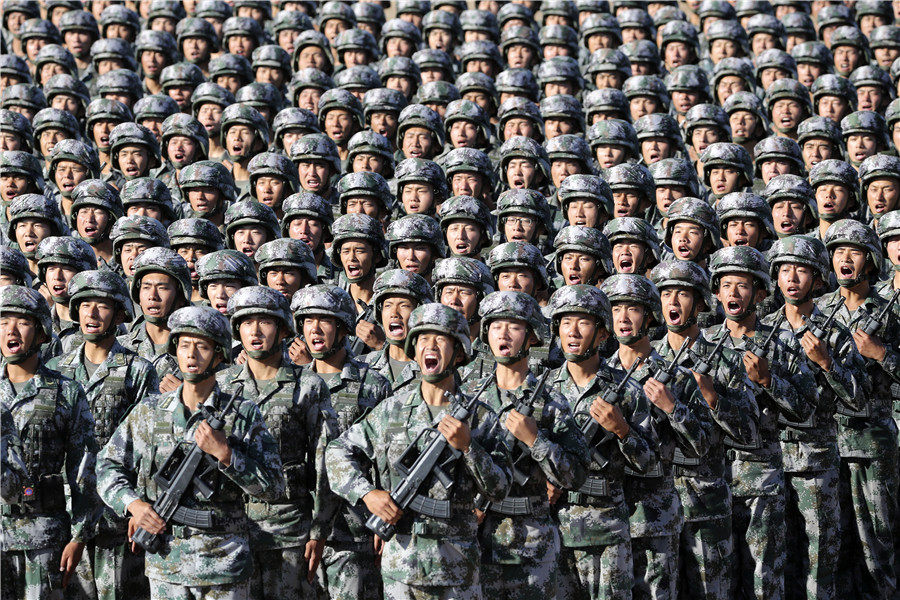
On Aug 1, 1927, the then young Communist Party of China, which was founded in July 1921, led a military uprising in Nanchang, Jiangxi province.
It established its own armed force in the hopes of liberating the Chinese people from the hands of the Kuomintang rulers, local warlords and foreign imperialists.
The date was later commemorated as the birth of the PLA, known as the Chinese Workers' and Peasants' Red Army for a long time soon after the Nanchang Uprising. The current name was formally adopted in 1947, two years prior to the founding of the New China.
Troops attending Sunday's parade had just finished a field training at the Zhurihe base, the largest exercise field in Asia. The training was part of the military's annual routine exercise plan, the Defense Ministry said.
General Han Weiguo, commander of the PLA Central Theater Command which arranged the parade on orders of the Central Military Commission, said the event displayed the PLA's new structure and achievements made through President Xi's overhaul of the military in the past few years.
He said that the parade was characterized by its "closeness to combat", explaining that participating officers and soldiers were in battle uniforms with their weapons and equipment in combat-ready status. The military sent 12,000 troops, about 600 land and naval weapons, and nearly 130 aircraft to participate in the parade.
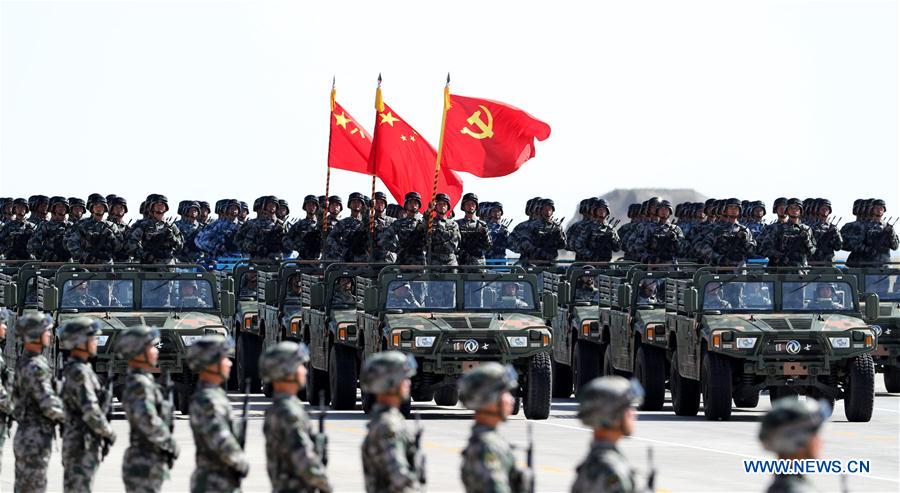
The event started at 9 am as President Xi boarded a car to inspect troops from all branches of the military taking part. The president then watched from a central stage as more than 200 soldiers in assault vehicles, carrying flags of the Party, the People's Republic and the PLA, drove past.
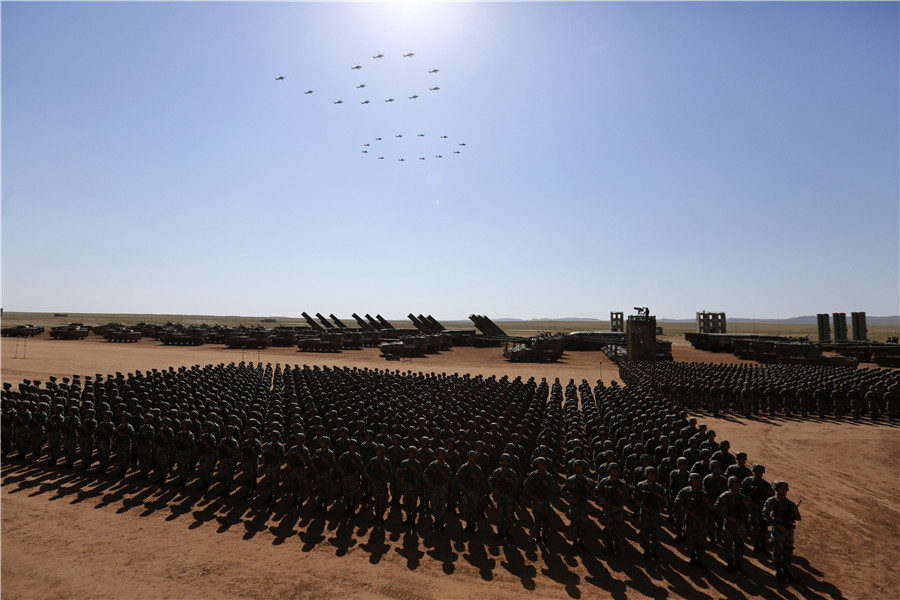
Seventeen attack helicopters then flew through the parade zone, forming two Chinese characters meaning August 1, the anniversary of the PLA. They were followed by another 24 helicopters that flew in the shape of the Arabic numerals of 90, symbolizing the 90-year history of the Chinese military.
Immediately afterwards, the PLA Ground Force's airborne assault unit made its public debut when 18 transport helicopters, guarded by eight attack helicopters landed and hundreds of soldiers disembarked at a rough training ground in front of the stage.
The tactic of using helicopters carrying troops to penetrate enemy defense was the first time the PLA has shown off fighting maneuvers in a parade.
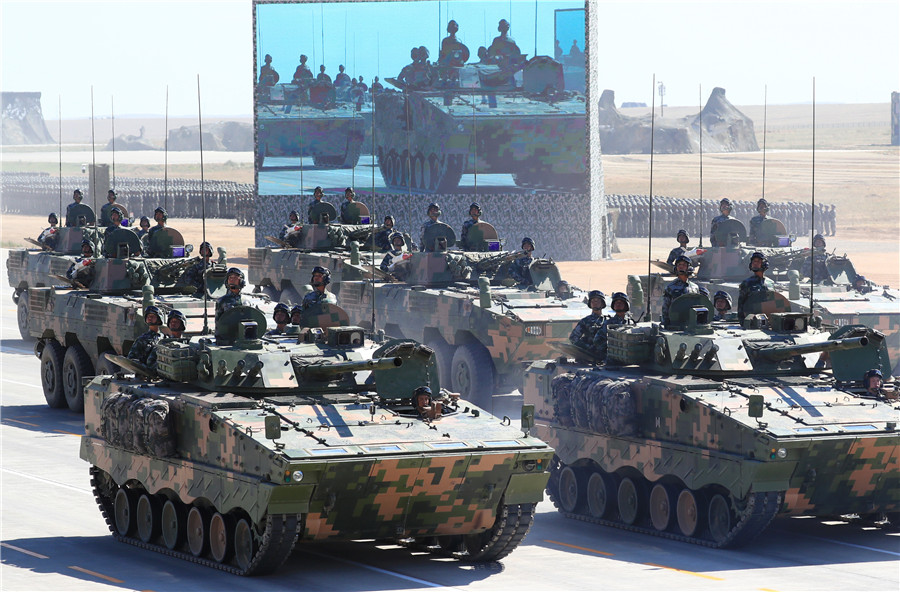
The ground strike group were accompanied by the best arms of the Chinese land force, including a Type-99A main battle tank, Type-08 and Type-04A infantry fighting vehicles, 122-milimeter-caliber and 155-mm-caliber self-propelled howitzers, 300-mm-caliber multiple rocket launcher, as well as a HJ-10 anti-tank missile carrier.
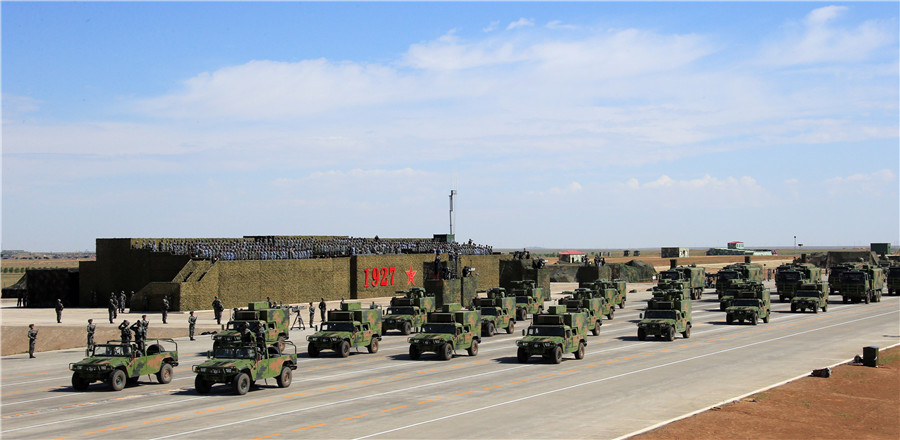
The next stage of the parade involved the information support group, showcasing some of the nation's latest electronic warfare devices, such as electronic reconnaissance and electronic countermeasure vehicles. There were also anti-radar and communication-jamming drones, the first public display of the PLA's information operation capacity.
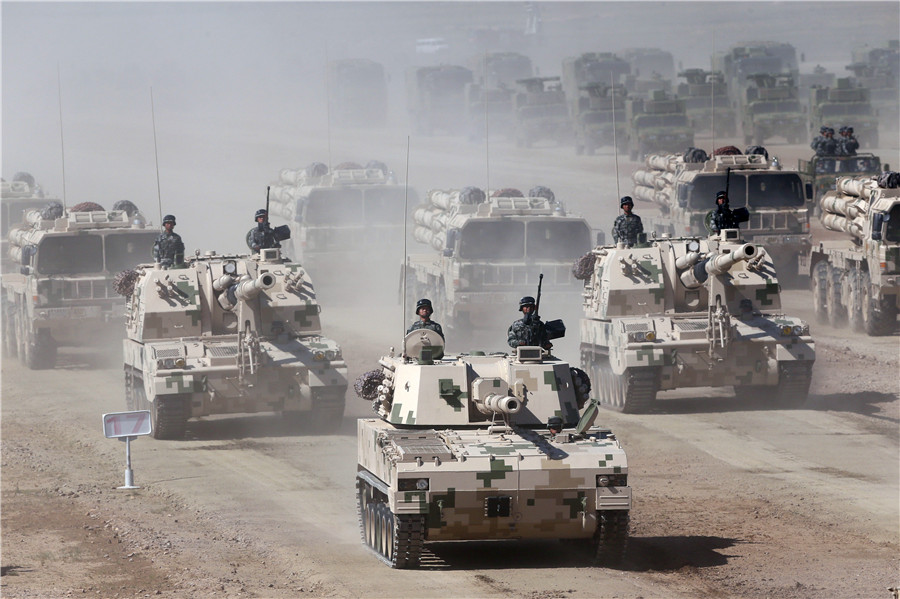
The third group represented the Chinese military's special warfare prowess with hundreds of elite commandos on light-duty reconnaissance and armored assault vehicles.
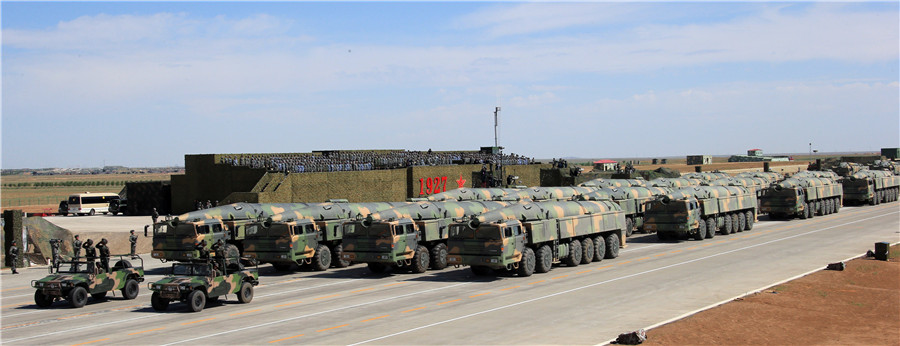
The fourth group -- air and missile defense -- featured early-warning radars, anti-aircraft missiles and anti-missile interceptors. The HQ-9B and HQ-22 missiles are new-generation weapons in China's air and missile defense systems.
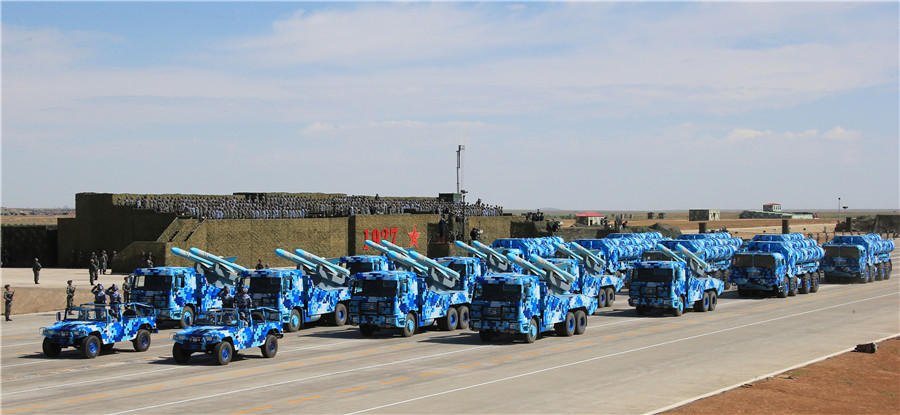
The naval combat group, was composed of marines and naval missiles, including the latest models – HHQ-9B air defense missile and YJ-12A anti-ship cruise missile.
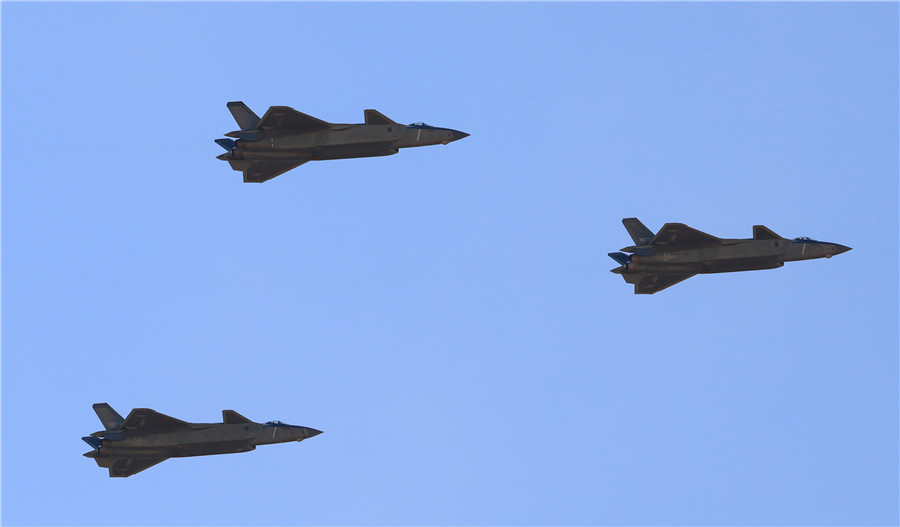
In the sky, the bulk of the aerial combat group roared through the dust and exhaust smoke produced by moving vehicles on the ground. The group was comprised of early-warning and control aircraft, bombers, transport planes, refueling tankers, aircraft carrier-borne and land-base fighter jets and a mechanized parachute unit.
The J-20 supersonic stealth jet, the world's third kind of fifth-generation fighter jet, KJ-500 early-warning and control plane and Y-20 strategic transport jet were among the aircraft in the sky. The next two groups were logistics support and counter-terrorism forces.
However, it was the PLA Rocket Force, the last group to appear, that were perhaps the most eye-catching. Wheeled launch vehicles carried five types of ballistic missiles including DF-16G, DF-21D and DF-26. According to the Rocket Force, DF-16G carries conventional warheads and has high accuracy, strong destructive power and requires only a short time for preparations.
The DF-21D land-based, anti-ship ballistic missile features a large coverage and good penetration and target-tracking capabilities. It is a milestone in the PLA's efforts to implant strategic capacity into its conventional ballistic missiles.
The DF-26, a new strategic deterrence weapon, is capable of conducting off-road launches of conventional and nuclear warheads in tough terrains. It can carry out rapid nuclear counterattack and medium- to long-range precision strikes using conventional warheads, according to the Rocket Force.